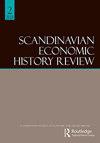Textiles in blue: production, consumption and material culture in rural areas in early-nineteenth century Finland
IF 0.5
Q4 ECONOMICS
引用次数: 2
Abstract
ABSTRACT The article focuses on masculine consumption patterns and the production and dyeing of textiles in rural Finland in the early nineteenth century. It maintains that the rural consumption of textiles as well as individual choices and tastes evolved, and our selected examples of males’ wardrobes demonstrate that contemporary styles were followed. The article targets an era that can be regarded as a watershed: this was a time when mass production was in its infancy and craft production and self-sufficiency were still relevant to household economies. As the wealth of certain groups, particularly landed peasantry, increased, they began among other things to purchase and wear clothes dyed with imported dyes such as indigo. The presence of blue garments in the wardrobes of the common people testifies to a change that took place in rural Finland. This change is evident especially in our analysis of probate inventories of the male inhabitants. Variety of documents on artisanship, the textile and dyeing industry and the import of indigo dye to Finland provide further evidence. The research thus contributes to the discussion on changing consumption patterns among the rural inhabitants in a country that is usually seen as one to which industrialisation came late.蓝色纺织品:19世纪初芬兰农村地区的生产、消费和物质文化
摘要本文关注19世纪初芬兰农村的男性消费模式和纺织品的生产和染色。它坚持认为,农村对纺织品的消费以及个人的选择和品味都在演变,我们选择的男性衣柜的例子表明,现代风格得到了遵循。这篇文章针对的是一个可以被视为分水岭的时代:这是一个大规模生产处于起步阶段的时代,手工生产和自给自足仍然与家庭经济相关。随着某些群体,特别是土地农民的财富增加,他们开始购买和穿着用进口染料(如靛蓝)染色的衣服。普通人衣柜里的蓝色衣服证明了芬兰农村发生的变化。这种变化在我们对男性居民遗嘱认证清单的分析中尤其明显。关于手工艺品、纺织和染色行业以及向芬兰进口靛蓝染料的各种文件提供了进一步的证据。因此,这项研究有助于讨论一个通常被视为工业化较晚的国家农村居民消费模式的变化。
本文章由计算机程序翻译,如有差异,请以英文原文为准。
求助全文
约1分钟内获得全文
求助全文
来源期刊

SCANDINAVIAN ECONOMIC HISTORY REVIEW
ECONOMICS-
CiteScore
1.60
自引率
16.70%
发文量
20
期刊介绍:
Scandinavian Economic History Review publishes articles and reviews in the broad field of Nordic economic, business and social history. The journal also publishes contributions from closely related fields, such as history of technology, maritime history and history of economic thought. Articles dealing with theoretical and methodological issues are also included. The editors aim to reflect contemporary research, thinking and debate in these fields, both within Scandinavia and more widely. The journal comprises a broad variety of aspects and approaches to economic and social history, ranging from macro economic history to business history, from quantitative to qualitative studies.
 求助内容:
求助内容: 应助结果提醒方式:
应助结果提醒方式:


